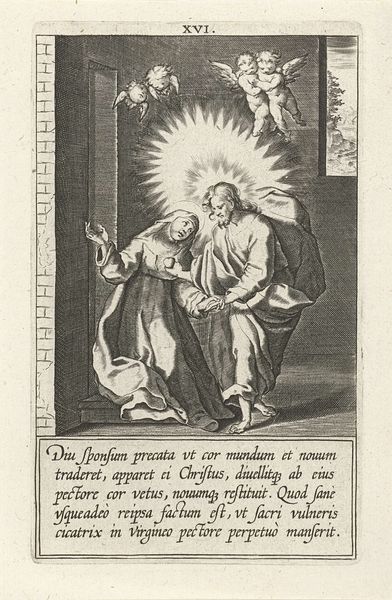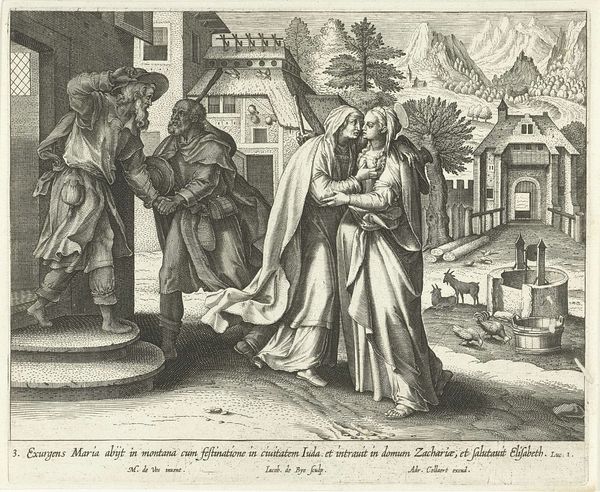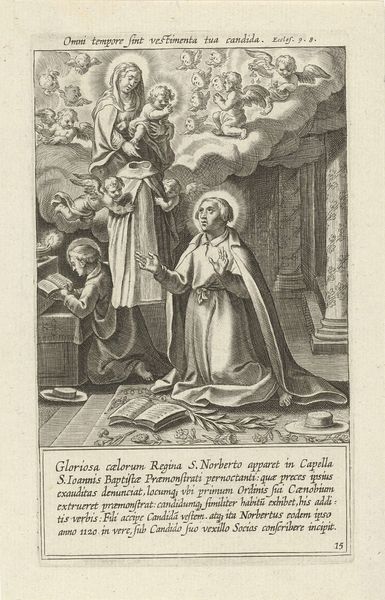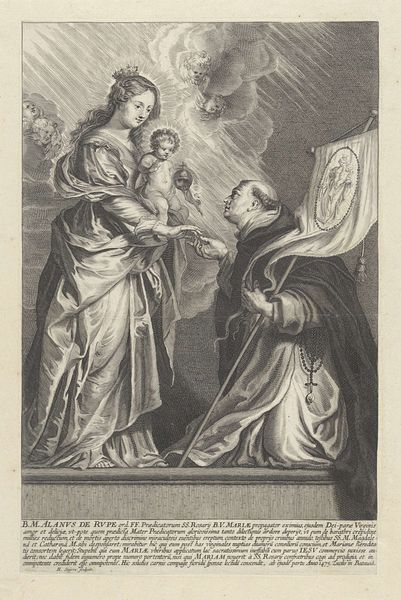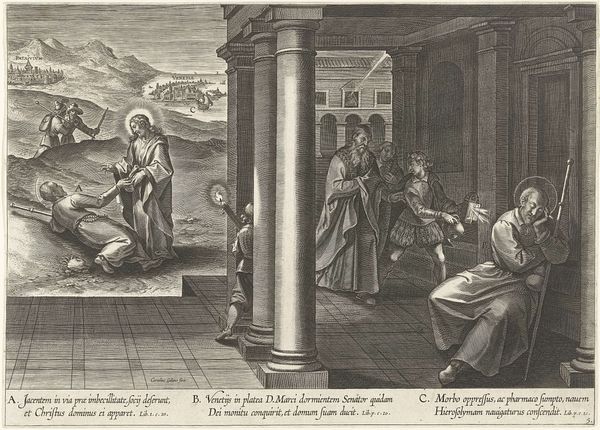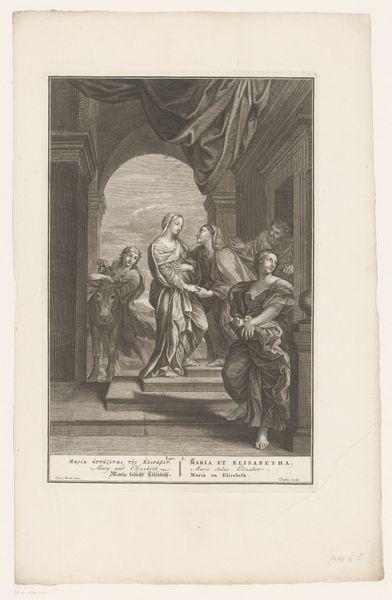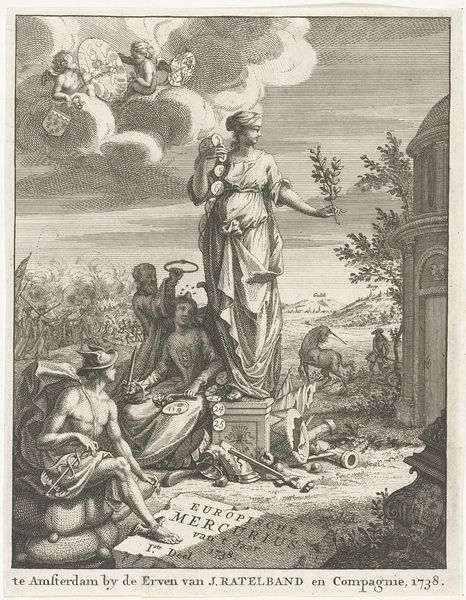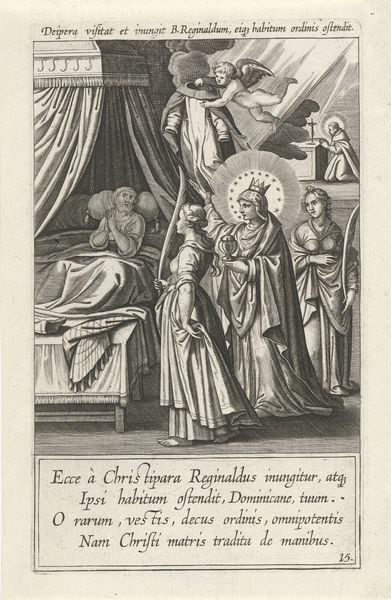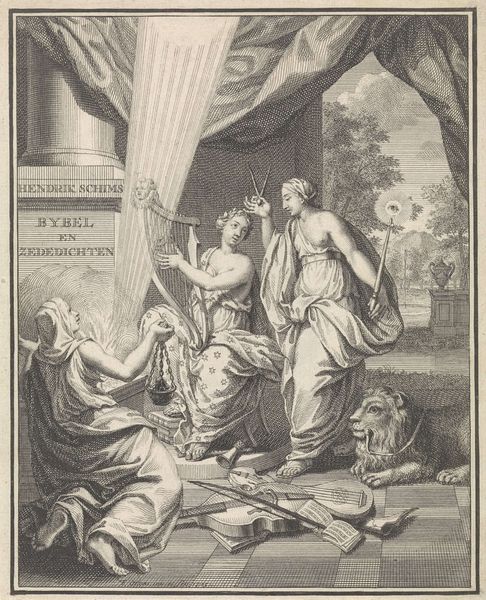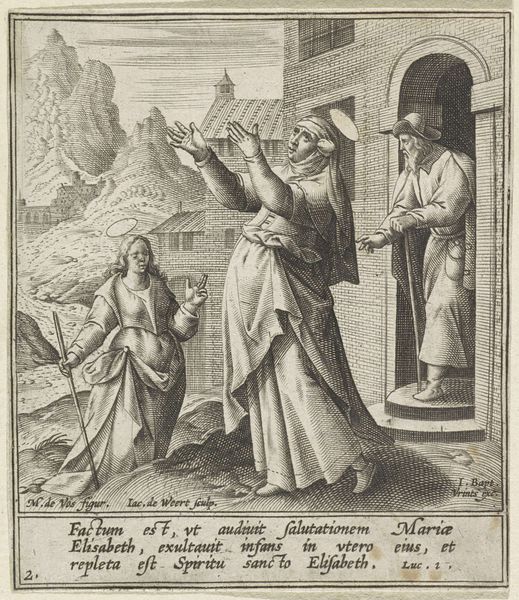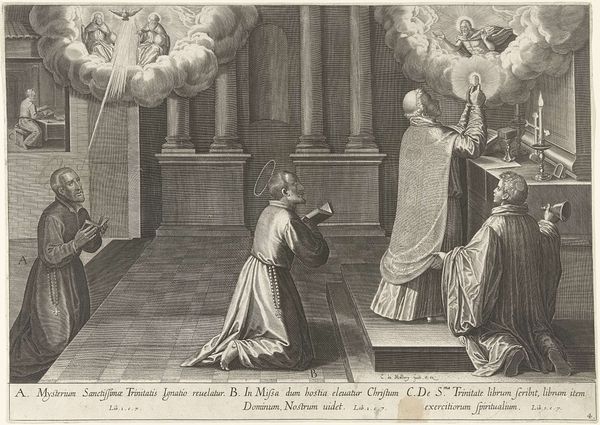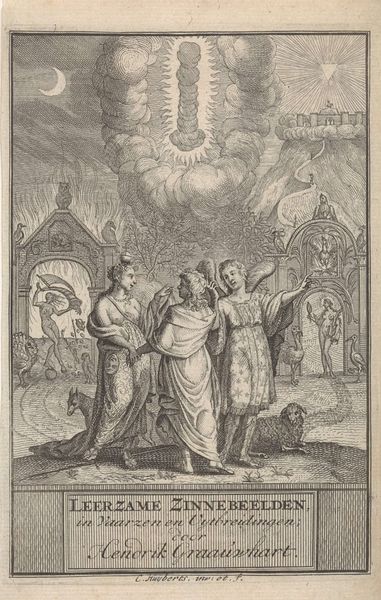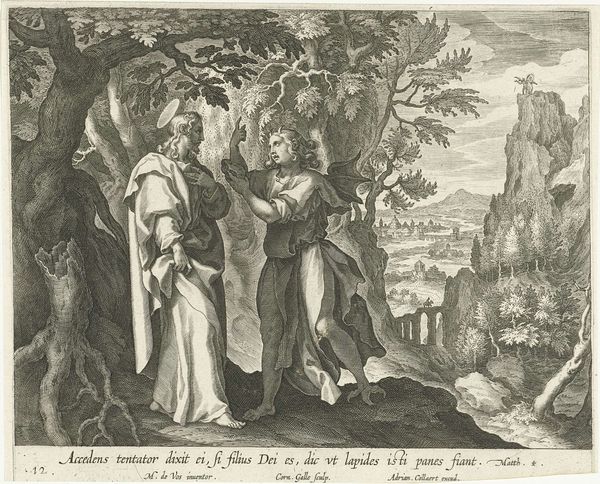
Maria geeft een lelietak aan de H. Maria Magdalena de Pazzi c. 1607 - 1650
0:00
0:00
cornelisgallei
Rijksmuseum
print, engraving
#
baroque
# print
#
figuration
#
history-painting
#
engraving
Dimensions: height 93 mm, width 133 mm
Copyright: Rijks Museum: Open Domain
Curator: This engraving, made by Cornelis Galle I sometime between 1607 and 1650, is titled "Maria Gives a Lily Branch to St. Maria Magdalena de Pazzi.” It’s currently held in the collection of the Rijksmuseum. The scene depicts, well, exactly what the title suggests. Editor: It's certainly… pious. There’s an almost dreamlike quality to it, achieved through the swirling clouds and the stark contrast of the engraving. The architectural elements seem to suggest both grandeur and containment. Curator: Precisely! Baroque engravings often played with such dramatic contrasts. And speaking of containment, notice how St. Maria Magdalena de Pazzi is presented—veiled and kneeling—a vision of humility receiving divine grace. It's not just about a saint receiving a flower; it's about receiving the symbols of purity and chastity, reflected in the lily, from the Virgin Mary herself. The entire composition points to the power dynamics of the Catholic Church, using this story to illustrate a key moral tenet. Editor: And beyond the obvious religious symbolism, that lily connects to broader cultural understandings of innocence and virtue. It taps into a pre-existing symbolic language, reinforcing specific ideas about women and spirituality. The male figures overlooking, like the suggestion of God the Father in the top cloud, serve as patriarchal witnesses over these symbolic presentations of power, reinforcing the very human structures shaping this divinity. Curator: A powerful insight! This image also presents a fascinating negotiation of earthly and divine power through the symbolic, visually grounding a fairly complex spiritual exchange into accessible iconography. Galle's choice of engraving allows for wide dissemination of these values across a broader public, acting as a form of visual instruction. Editor: Indeed. Its very existence as a print suggests its role in the distribution and reinforcement of those established beliefs, especially given the fraught political and religious climate of the time. Curator: This detailed, dramatic interpretation, while perhaps outwardly straightforward in its presentation, shows how potent and pliable these types of representations can be. Editor: A striking example of how visual storytelling shapes our understanding of history and the beliefs we internalize, especially around faith.
Comments
No comments
Be the first to comment and join the conversation on the ultimate creative platform.
